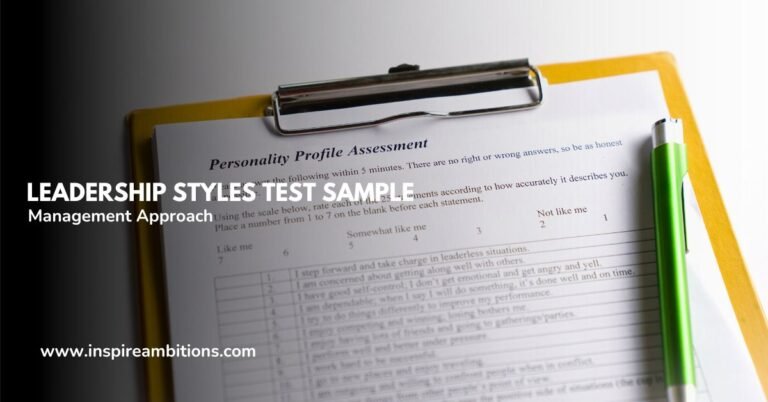Significado da linguagem corporal de braços cruzados - o que isso significa?
Crossed arms are a familiar body language gesture that can convey different meanings depending on the context. It is a form of nonverbal communication that can reveal a person’s inner thoughts and emotions.
While some people may use it as a sign of confidence or comfort, others may interpret it as a defensive or hostile gesture. In this article, we will explore the various interpretations of crossed-arms linguagem corporal and what they may reveal about a person’s state of mind.
Research suggests that crossed arms can indicate confidence or perseverance in some situations. However, it is essential to note that crossed arms can also mean anger or arrogance, so using this gesture with discretion is necessary.
During high-anxiety situations, keeping your hands busy with other activities, such as notetaking during an interview, can help you avoid fidgeting and convey a more favourable impression.
In addition to its potential positive and negative connotations, crossed arms can signal a person is closed off or unapproachable. However, the meaning of this gesture can vary depending on the context and the grip.
For example, a person may cross their arms to protect themselves physically or emotionally, or they may do so as an act of self-restraint. By understanding the different interpretations of crossed-arms body language, you can better communicate your thoughts and emotions nonverbally and interpret the messages of others more accurately.
Compreendendo a linguagem corporal
Body language is a form of nonverbal communication involving physical cues to express emotions, attitudes, and intentions. It is an essential aspect of communication and can be used to interpret and understand what others think and feel.
Nonverbal communication is the transmission of messages without the use of words. It includes expressões faciais, body movements, gestures, eye contact, and tone of voice. Nonverbal cues can convey happiness, sadness, anger, and fear.
Interpreting body language involves understanding the context in which it occurs. Cultural and social factors can influence nonverbal cues. For example, in some cultures, direct eye contact is seen as a sign of respect, while in others, it is considered rude or aggressive.
When interpreting body language, it is essential to consider verbal and nonverbal cues. Verbal cues can provide additional information about a person’s thoughts and feelings. For example, someone may say they are happy, but their tone and facial expressions may suggest otherwise.
Nonverbal behaviour can also be used to regulate communication. For example, crossing your arms can signal that you are closed off or defensive while leaning forward can indicate interest or engagement.
Para concluir, understanding body language is an essential aspect of communication. It involves interpreting nonverbal cues in the context of verbal cues and the situation. You can better understand others think and feel by paying attention to body language.
The Meaning of Crossed Arms
Crossing your arms across your chest is one of the most common gestures you might encounter daily. This gesture is often associated with defensiveness, discomfort, uneasiness, shyness, or insecurity.
However, it is essential to note that the meaning of crossed arms can vary depending on the context and the individual.
When someone crosses their arms, it creates a physical barrier or boundary, which can be seen as a way of protecting oneself. This can signify self-restraint or self-hugging, especially when the arms are tightly crossed.
It can also be a way of creating comfort, especially when someone is feeling overwhelmed or unsure of themselves.
Crossing arms can sometimes be a sign of confidence and comfort. When someone is standing with their arms crossed in a relaxed and open manner, it can be a sign of faith and a way of resting the arms. This is often seen in a casual or informal setting where the individual is comfortable and at ease.
It is important to note that other gestures and postures can also influence the meaning of crossed arms.
For example, if someone stands with their arms crossed and their shoulders hunched forward, it can be a sign of defensiveness and being closed off. On the other hand, if someone is standing with their arms crossed and their shoulders back, it can be a sign of confidence and expanding their posture.
In summary, crossed arms can have a variety of meanings depending on the context and individual. It can signify defensiveness, discomfort, uneasiness, shyness, or insecurity. It can also be a way of creating comfort, self-restraint, or confidence.
It is essential to pay attention to other gestures and postures to interpret the meaning of crossed arms accurately.
Emotions Conveyed by Crossed Arms
Crossed arms are a familiar body language gesture that can convey various emotions. While it is not always a negative sign, it is often associated with defensiveness, anxiety, and stress. Here are some of the emotions that crossed arms can convey:
Defensiveness
Crossed arms are often a sign of defensiveness, especially when someone feels threatened or attacked. It can signal that the person is trying to protect themselves from perceived harm.
However, it’s important to note that not everyone who crosses their arms is being defensive. Some people may do it out of habit or simply because they feel more comfortable.
Anxiety and Stress
Crossed arms can also be a sign of anxiety and stress. When someone feels nervous or overwhelmed, they may cross their arms to create a physical barrier between themselves and others. This can help them feel more in control of the situation and reduce feelings of vulnerability.
Disagreement
Crossed arms can also signal disagreement or a lack of agreement with what is being said. It can show that the person is not on board with the conversation or has a different opinion.
Authority
Crossing arms can sometimes be a sign of authority or power. When someone is in a position of power, they may cross their arms to show they control the situation. It can also be a way of signalling that they are not open to negociação or compromise.
Relaxed
While crossed arms are often associated with negative emotions, they can also signify relaxation. When someone feels comfortable and at ease, they may cross their arms to get comfortable. It can be a way of showing that they are relaxed and not feeling threatened or defensive.
In conclusion, crossed arms can convey various emotions depending on the context and the individual. While it’s essential to be aware of dicas de linguagem corporal, it’s also important to consider other factors, such as tone of voice and facial expressions, when interpreting someone’s emotional state.
Crossed Arms in Different Contexts
Crossing your arms is a familiar body language gesture with different meanings depending on the context. Here are some of the most common situations where crossed arms can be observed and what they may indicate:
Social Settings
Crossing your arms can signify resistance or discomfort in social settings. It may indicate feeling defensive, closed off, or uneasy. On the other hand, some people cross their arms simply because it feels comfortable or natural to them, without necessarily conveying any emoções negativas.
Conversations
During a conversation, crossing your arms can signal disinterest or boredom. It can also indicate that you need to be more open to hearing what the other person is saying or are mentally preparing to defend your point of view. However, in some cases, crossing your arms can be a way to show that you are ouvindo ativamente and processing information.
Eye Contact and Mirroring
When making eye contact with someone, crossing your arms can be seen as a way to create a barrier or distance between yourself and the other person. However, if the other person is also crossing their arms, it may be a sign of mirroring, indicating that you are on the same page and share similar views.
Handshakes
Crossing your arms during a handshake can be perceived as a sign of resistance or aggression. It can also make you appear unapproachable or uninterested in the other person. Keeping your arms relaxed and open during a handshake is recommended to make a good impression.
Cold or Uncomfortable Environments
In cold or uncomfortable environments, crossing your arms can be a way to keep warm or protect yourself from the elements. However, it can also signal that you are feeling uncomfortable or anxious, wildly if you are also hunching your shoulders or avoiding eye contact.
Eye Movements and Readiness
Pay attention to your eye movements and body posture when crossing your arms. If you are looking around or fidgeting, it may indicate that you are not fully engaged in the situation. On the other hand, maintaining eye contact and standing tall can be a sign of readiness and confidence.
Aggression and Intimidation
In some cases, crossing your arms can be a way to signal aggression or intimidation. It can make you appear larger and more imposing, especially if you are clenching your fists or leaning forward. However, this body language can also backfire and make you seem aggressive or hostile.
Overall, crossed arms can have many meanings depending on the context and the individual. To interpret this gesture accurately, looking at other body language cues and considering the specific situation and cultural norms is essential.
Interpreting Other Nonverbal Cues
When interpreting crossed-arms body language, one must consider other nonverbal cues the person displays. Here are some other nonverbal cues to look out for and what they might mean:
- Thinking: If someone is furrowing their brow or tilting their head, it could indicate that they are deep in thought or trying to process information.
- Facial expressions: A person’s facial expressions can reveal much about their emotional state. For example, if someone is smiling, it could mean they are happy or content. Conversely, if someone is frowning, it could indicate they are unhappy or displeased.
- Voice: The tone and pitch of a person’s voice can also reveal their emotional state. For example, if someone is speaking in a monotone voice, it could indicate they are bored or disinterested. On the other hand, if someone is speaking in a high-pitched or shaky voice, it could mean they are nervous or anxious.
- Confiança: A person’s body language can also reveal how confident they are feels. For example, if someone is standing up straight with their shoulders back, it could indicate they are feeling confident and self-assured.
- Sorridente: As mentioned earlier, a person’s smile can reveal their emotional state. However, it’s important to note that not all smiles are genuine. A fake smile, or “polite smile,” is often used in social situations to convey friendliness or politeness.
- Lying: While it’s not always easy to tell if someone lies, some nonverbal cues could indicate deception. For example, if someone is avoiding eye contact or fidgeting, it could mean they are lying or hiding something.
- Agreement: If someone is nodding or using affirmative hand gestures (such as a thumbs up), it could indicate they agree with what you are saying.
- Control: A person’s body language can also reveal how much power they feel over a situation. For example, if someone is standing with their arms crossed and their feet shoulder-width apart, it could indicate they feel confident and in control.
- Vocal tone: As mentioned earlier, a person’s vocal style can reveal their emotional state. However, it’s important to note that some people may use a different vocal tone to convey a specific message. For example, a person may use a stern tone to get authority or seriousness.
- Microexpressions are brief, involuntary facial expressions that reveal a person’s genuine emotions. These expressions are often fleeting and difficult to detect, but they can reveal much about a person’s emotional state.
Overall, interpreting crossed-arms body language requires paying attention to other nonverbal cues that the person is displaying. By considering these other cues, you can better understand what the person is thinking and feeling.
Common Misconceptions about Crossed Arms
Crossed arms have long been associated with negative body language, leading to several misconceptions about their meaning. Here are some of the most common misconceptions about crossed arms and why they might not be accurate:
- Misconception 1: Crossed arms always mean someone is unapproachable. While crossed arms can indicate defensiveness or discomfort, it doesn’t necessarily mean someone is unapproachable. In some cultures, crossed arms can be a sign of respect or attentiveness; in some situations, it can be a way to create a physical boundary or show that someone is focused on their thoughts.
- Misconception 2: Crossed arms always indicate insecurity. While crossed arms can be a sign of insecurity or anxiety, it doesn’t always mean someone feels that way. Sometimes, it can be a way to show confidence or assertiveness, especially if the person stands tall with their shoulders back and head held high.
- Misconception 3: Crossed arms always lead to miscommunication. While crossed arms can make reading someone’s body language harder, it doesn’t automatically mean there will be miscommunication. It’s essential to look for other cues like facial expressions and tone of voice to understand someone’s emotions and intentions better.
- Frequently asked question: Can I uncross my arms during a conversation? Yes, you can! While uncrossing your arms is not always necessary, it can help signal to the other person that you are open to what they say. If you feel comfortable doing so, try uncrossing your arms and see if it changes the dynamic of the conversation.
Overall, it’s important to remember that body language is complex and nuanced, and crossed arms can have a variety of meanings depending on the situation and context. While paying attention to someone’s body language is essential, it’s also important to consider other factors like cultural differences and individual personality traits before making assumptions about what their body language might mean.
Crossed Arms Body Language Meaning – Conclusion
In conclusion, crossed arms can have various meanings depending on the context and situation. It is important to interpret this nonverbal communication cautiously and not jump to conclusions.
The intention behind crossed arms can range from feeling anxious, insecure, or defensive to simply seeking comfort.
It is crucial to consider other nonverbal cues and verbal communication to accurately understand the motivation behind crossed arms. For example, crossing their arms while maintaining eye contact and nodding may indicate perseverance and attentiveness rather than defensiveness or insecurity.
When interpreting crossed arms, it is essential to consider the individual’s intentions and personality traits. Some people may naturally cross their arms due to their upbringing or cultural background.
Therefore, it is essential not to make exaggerated or false claims about someone’s intentions based solely on this gesture.
In summary, crossed arms can be a complex nonverbal communication signal that requires careful interpretation. You can better understand what this gesture may mean by considering the context, situation, and individual’s intentions.
Remember to use caution and not jump to conclusions when interpreting crossed arms.






